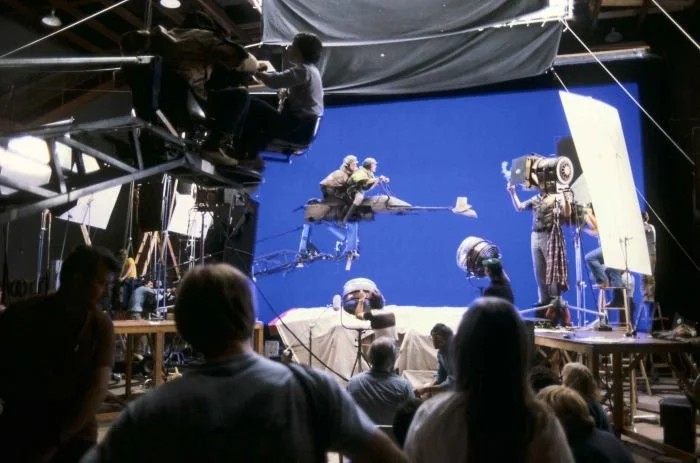'Return Of The Jedi' Receives The Same Honor As 'A New Hope' And 'Empire Strikes Back'
This past week, Star Wars Episode VI: Return of the Jedi achieved what some may say is immortal status within the film industry by being added to the National Film registry, much to the delight of many Star Wars fans. It joins previous Star Wars movies, A New Hope, which was added in 1989, and The Empire Strikes Back in 2010. But what does this mean for the galaxy far, far away?
To figure out what this means for us fans, first, we need to understand what happens when you are added to the National Film Registry. Born from the National Film Preservation Act in the late 1980s, Hollywood approached Congress to help preserve films from being altered or edited beyond recognition, losing the film's integrity. This preservation is why you've never seen It's a Wonderful Life colorized, or when you watch A New Hope on TV, there aren't weird cuts or edits. The entire purpose is to ensure the survival, conservation, and increased public availability of America's film heritage.
RELATED: Star Wars Theory: What If The Emperor Won In 'Return Of The Jedi'?
Since 1989, the National Film Preservation Board (NFPB) selects up to 25 movies every year that they feel are culturally, historically, or aesthetically significant films to the American public. In addition to A New Hope and The Empire Strikes Back, other genre films include 2001: A Space Odyssey (1991), Blade Runner (1993), and even Jurassic Park (1993). This past week, Return of the Jedi joined 25 other films as part of write-in votes from the public and was selected as per NFPB John Ptak:
"George [Lucas] has created such great characters with enduring stories that are fresh with every viewing. The success and influence of the Star Wars series films on filmmakers, the industry, and a global audience is remarkable and will stand the test of time."
But does Return of the Jedi really deserve the love from the fans and the National Film Registry? It was, at the time, the epic conclusion to the original trilogy where Luke Skywalker completed his arc from a simple farm boy to Jedi Knight. As a result, Luke Skywalker became the hero of a new generation of modern myth. But, while the movie closed out the trilogy neatly, several questions were left unanswered, both prequel and sequel-based. What was the Clone Wars? Was Luke able to teach other Jedi? How could Leia get replacement clothes if the Ewoks hadn't seen other humans before? Perhaps the open-ended questions were part of Lucas' plan. There was doubt at the time whether or not Lucas would make more Star Wars movies, and Lucas loved to leave opportunities for furthering the story just in case.
Storytelling aside, the movie also contained considerable advancements in CGI and special effects. For example, Industrial Light and Magic (ILM) truly made a name for itself from its construction of a new camera rig called the Technirama—a high speed, servo-driven track system capable of rapid moves, to Lucasfilm Computer Division's development of a wire-frame "holographic" model of the Death Star under construction, to the methods used to capture Princess Leia being chased through a redwood forest on a speeder bike. Return of the Jedi expertly melded the creative and technical worlds to overcome challenges and create some of history's most extraordinary movie magic.
Now that the original trilogy is preserved in the National Film Board archives, will some of the other Star Wars works make it in? The prequel movies weren't the best written and acted films to some critics. However, given their technological advances in CGI and green screen work, I think they shouldn't be overlooked. On the other hand, the sequel movies will probably be added because of their technical achievements, but do they have better storytelling and cultural weight? Only time will tell.
READ NEXT: See Sabastian Stan Suit Up As Luke Skywalker For 'Mandalorian' Season 3 Art
Source(s): CBR


